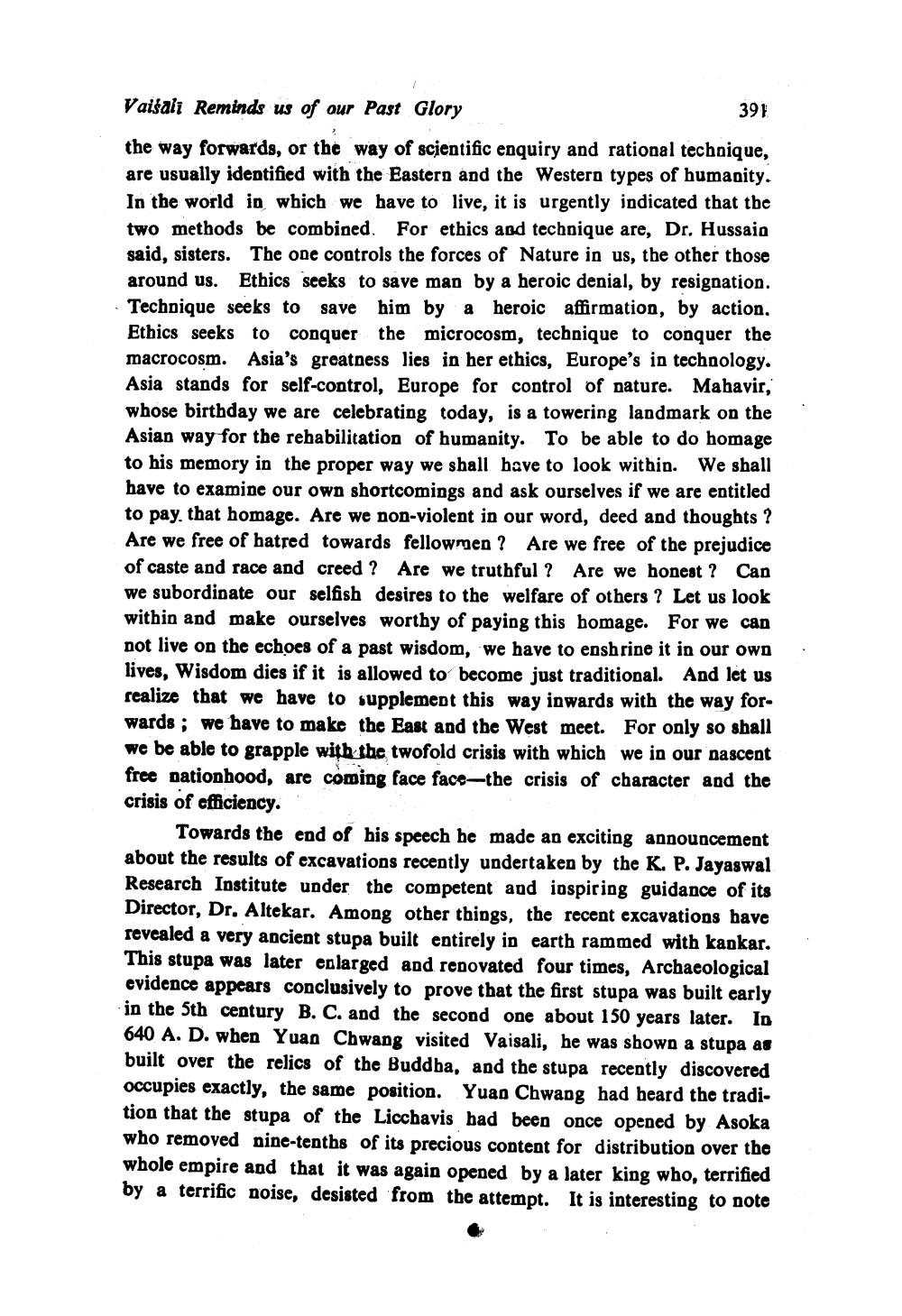________________ Vaisali Reminds us of our Past Glory 391 the way forwards, or the way of scientific enquiry and rational technique, are usually identified with the Eastern and the Western types of humanity. In the world in which we have to live, it is urgently indicated that the two methods be combined. For ethics ard technique are, Dr. Hussain said, sisters. The one controls the forces of Nature in us, the other those around us. Ethics seeks to save man by a heroic denial, by resignation. Technique seeks to save him by a heroic affirmation, by action. Ethics seeks to conquer the microcosm, technique to conquer the macrocosm. Asia's greatness lies in her ethics, Europe's in technology. Asia stands for self-control, Europe for control of nature. Mahavir, whose birthday we are celebrating today, is a towering landmark on the Asian way for the rehabilitation of humanity. To be able to do homage to his memory in the proper way we shall bave to look within. We shall have to examine our own shortcomings and ask ourselves if we are entitled to pay. that homage. Are we non-violent in our word, deed and thoughts? Are we free of hatred towards fellowmen? Are we free of the prejudice of caste and race and creed? Are we truthful ? Are we honest ? Can we subordinate our selfish desires to the welfare of others ? Let us look within and make ourselves worthy of paying this bomage. For we can not live on the echoes of a past wisdom, we have to enshrine it in our own lives, Wisdom dies if it is allowed to become just traditional. And let us realize that we have to supplement this way inwards with the way forwards; we have to make the East and the West meet. For only so shall we be able to grapple with the twofold crisis with which we in our nascent free nationbood, are coming face face-the crisis of character and the crisis of efficiency. Towards the end of his speech he made an exciting announcement about the results of excavations recently undertaken by the K. P. Jayaswal Research Institute under the competent and iospiring guidance of its Director, Dr. Altekar. Among other things, the recent excavations have revealed a very ancient stupa built entirely in earth rammed with kankar. This stupa was later enlarged and renovated four times, Archaeological evidence appears conclusively to prove that the first stupa was built early in the 5th century B. C. and the second one about 150 years later. In 640 A. D. when Yuan Chwang visited Vaisali, he was shown a stupa as built over the relics of the Buddha, and the stupa recently discovered occupies exactly, the same position. Yuan Chwang had heard the tradition that the stupa of the Licchavis had been once opened by Asoka who removed nine-tenths of its precious content for distribution over the whole empire and that it was again opened by a later king who, terrified by a terrific noise, desisted from the attempt. It is interesting to note




